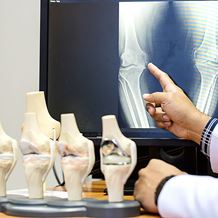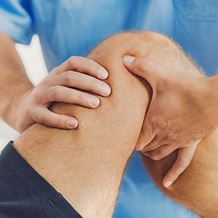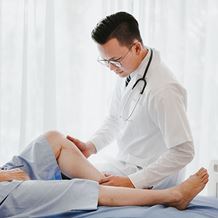Complete Guide to Runners Knee Recovery
- Home
- Services
- Orthopaedics
- Knowledge Hub
- Complete Guide to Runners Knee Recovery
Knee pain is a common complaint amongst runners of all ages. The knee is one of the most overused parts of the body and although designed to carry load, it is vulnerable to injury.
Running applies approximately five times your body weight directly to the knee joint, so it’s little surprise that many people experience knee pain and discomfort. But don’t hang up your trainers just yet.
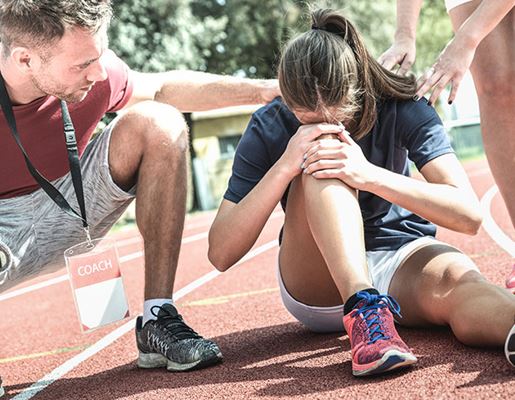
There are many ways to diagnose and treat knee injuries from running. Formulating an effective treatment plan is key to relieving symptoms and restoring normal activity and function.
Contact us today to find out how we can help keep you running for longer.
Regular running has multiple health benefits and there is good evidence to suggest that this activity helps strengthen the cartilage and muscles that support the knee joint. Injury and damage from running are more likely to occur through sudden, disproportionate activity or an incorrect technique. If you’re experiencing knee pain and want to understand your treatment options, here’s what you need to know.
Common Knee Conditions
Runner's Knee (Patellofemoral Pain Syndrome or Chondromalacia Patellae)
Indicated by pain around the patella (kneecap) that worsens with exercise, runner's knee is the most common condition for runners and is associated with overuse. Thought to be caused by an imbalance in the supporting muscles, the cartilage gets irritated and causes pain. Runner's knee can worsen with the intensity of exercise, as well as descending stairs or running downhill.
What causes Runner's Knee?
Runner's knee can be caused by things outside of your control, like a natural structural defect, or things that are able to be corrected, like a certain way of walking or running. Here are some of the main reasons people become afflicted:
Overuse and repetitive strain: Engaging in repetitive movements, especially those that involve bending and straightening the knee, can lead to irritation of the soft tissues around the knee. Over time, this can cause inflammation and pain.
Muscle imbalances: Weakness or imbalance in the muscles around the knee, particularly the quadriceps and the muscles that support the hip, can alter the way the kneecap moves within its groove. This can lead to improper tracking and increased pressure on the patella, resulting in pain.
Biomechanical issues: Abnormalities in the way you move, such as poor alignment of the knees and hips during movement, can increase the stress on the kneecap and its surrounding structures.
Flat feet or high arches: Feet that roll inward excessively (overpronation) or have high arches can affect the alignment of the lower extremities and contribute to patellofemoral pain.
Improper footwear: Wearing shoes that don't provide proper support or that are worn out can lead to improper foot mechanics, potentially contributing to runner's knee.
Sudden increase in intensity or volume: Rapidly increasing the intensity, duration or frequency of physical activity, such as running, without proper conditioning and gradual progression can strain the knee joints and lead to PFPS.
Trauma or injury: A direct blow to the knee, fall or other trauma can lead to damage to the knee joint structures, potentially causing pain and inflammation.
Faulty running technique: Running with poor form, such as overstriding, can lead to increased impact forces on the knees, contributing to runner's knee.
Tight muscles and lack of flexibility: Tight muscles around the hips, thighs and calves can alter the mechanics of the knee joint, increasing the risk of patellofemoral pain.
Genetics: Some individuals may be predisposed to developing runner's knee due to factors like the alignment of their bones or the natural shape of their patella.
Patella Tendonitis (Jumper's Knee)
Causing pain at the front of the knee or top of the shinbone, this condition is common in downhill running and is notable by a swelling of the tendon that connects the patella (kneecap) to the upper tibia (shinbone). It is more prevalent in sports that include a lot of stopping and starting.
What causes patella tendonitis?
Patella tendonitis is often caused by overuse and strain on the tendon, leading to microtears and inflammation. Several factors can contribute to the development of patella tendonitis:
Overuse and repetitive strain: Engaging in activities that require repetitive bending and straightening of the knee, such as jumping and running, can put excessive strain on the patellar tendon over time. This can lead to inflammation and small tears in the tendon.
Sudden increase in activity: Rapidly increasing the intensity, duration or frequency of activities that stress the patellar tendon, without allowing sufficient time for adaptation and recovery, can contribute to tendonitis.
Improper technique: Poor biomechanics, such as improper landing techniques after jumps or running with incorrect form, can increase the stress on the patellar tendon.
Muscle imbalances: Weakness or imbalances in the muscles around the knee, particularly the quadriceps and the hamstrings, can alter the distribution of forces on the patellar tendon, leading to overloading and irritation.
Tight muscles: Tight quadriceps and calf muscles can alter the biomechanics of the knee joint and cause tendon strain.
Inadequate warm-up or cool-down: Failing to properly warm up before engaging in physical activity or neglecting to stretch and cool down afterwards can increase the risk of tendonitis.
Footwear and surface: Wearing running shoes that don't provide proper support or shock absorption, as well as performing activities on hard surfaces, can contribute to increased impact forces on the tendon.
Age and physical condition: Adolescents and young adults who are still growing may be more susceptible to patella tendonitis due to the rapid changes in bone and tendon structure.
Genetics: Some people may have a genetic predisposition to developing tendon-related conditions.
Previous injuries: Past knee injuries or surgeries can alter the mechanics of the knee joint and increase the risk of developing jumper's knee.
Certain sports: Sports that involve frequent jumping, such as basketball and volleyball, can place repetitive strain on the patellar tendon.
Anterior Cruciate Ligament (ACL) Rupture
The ACL is the knee’s major ligament controlling rotational stability. An ACL tear is often caused by a pivoting manoeuvre such as changing direction or a sudden change in speed. Reconstruction is often required if the patient wishes to return to pivoting sports.
What causes an ACL rupture?
An anterior cruciate ligament (ACL) rupture is a common knee injury, particularly among athletes involved in sports that require sudden changes in direction, jumping and pivoting. Here are some of the factors that can contribute to an ACL rupture:
Sudden stops or changes in direction: Rapid and forceful changes in movement, such as abruptly stopping, pivoting or changing direction while running, can place excessive stress on the ACL, potentially leading to a rupture.
Non-contact injuries: ACL ruptures can occur without direct impact to the knee. Landing awkwardly from a jump or decelerating suddenly can cause the ligament to tear.
Sports involving cutting and pivoting: Athletes participating in sports like soccer, basketball, football and skiing are at a higher risk due to the frequent need for abrupt changes in movement.
Improper landing techniques: Landing with the knee joint straight or with poor alignment during jumps can increase the risk of ACL injury.
Hyperextension: Extending the knee joint excessively beyond its normal range of motion can strain the ACL and lead to rupture.
Direct impact: A strong blow to the knee, such as a collision in contact sports, can cause enough force to tear the ACL.
Muscle imbalances: Weakness or imbalances in the muscles that support the knee, particularly the quadriceps and hamstrings, can contribute to instability and increase the risk of ACL injury.
Biomechanical factors: Anatomic variations in the shape and alignment of the knee joint can affect the mechanics of movement and potentially increase ACL injury risk.
Previous injuries: Individuals who have had previous knee injuries, especially if they weren't fully rehabilitated, might have compromised ligaments and a higher susceptibility to ACL tears.
Gender: Research has shown that female runners and athletes are at a higher risk of ACL injuries due to factors like hormonal differences, anatomical factors and movement patterns.
Fatigue: Performing high-intensity activities when fatigued can affect muscle control and coordination, increasing the risk of injury.
Prepatellar (Kneecap) Bursitis
The prepatellar bursa is a fluid-filled sack between the skin and bone at the front of the knee. Repetitive irritation, such as kneeling for long periods, can cause the bursa to become inflamed and swollen. This puts pressure on the surrounding tissues, causing pain over the front of the knee. It is often referred to as Nursemaid’s or Nun’s Knees.
What causes Kneecap Bursitis?
Symptoms of kneecap bursitis include pain, swelling, and tenderness at the front of the knee, which may worsen with movement and pressure. Here are some of the things that can lead to the condition:
Repetitive pressure: Activities that involve frequent kneeling or direct pressure on the front of the knee can irritate the bursa and lead to inflammation. This is particularly common in occupations that require kneeling, such as cleaning, gardening or construction work.
Trauma: A direct blow or impact to the front of the knee can cause the bursa to become inflamed and painful.
Friction and overuse: Activities that involve repetitive bending and straightening of the knee, such as running and climbing stairs, can lead to irritation and inflammation of the bursa.
Infection: In some cases, an infection can cause the bursa to become inflamed and swollen. This is known as infectious bursitis and typically requires medical treatment.
Gout or arthritis: Conditions like gout or certain types of arthritis can lead to inflammation of the bursa, resulting in kneecap bursitis.
Underlying medical conditions: Certain medical conditions, such as rheumatoid arthritis or systemic lupus erythematosus, can increase the risk of bursitis.
Excess weight: Being overweight places additional stress on the knees, which can contribute to the development of kneecap bursitis.
Poor blood flow: Conditions that affect blood flow to the bursa, such as diabetes, can impair the body's ability to fight inflammation and increase the risk of bursitis.
Tight muscles and tendons: Tight quadriceps muscles or tendons that attach around the knee can increase pressure on the bursa, leading to irritation.
Wearing thin or tight clothing: Wearing clothing that places continuous pressure on the front of the knee, especially during activities, can contribute to irritation of the bursa.
Post-surgery: After certain knee surgeries, such as knee replacement or arthroscopy, there is an increased risk of developing bursitis due to the trauma and altered mechanics.
Meniscus Tear
The meniscus is the C-shaped piece of cartilage between the femur and the tibia, absorbing shock and distributing weight across the joint. As this cartilage weakens with age and wear, it is more prone to tearing, causing swelling, pain and catching on the inside or outside of the knee. Often accompanied by other knee injuries, meniscus tears are a common cause of knee pain for runners.
What causes a meniscus tear?
As the shock absorbers and stabilisers of the knee, the menisci serve a crucial function for runners. Meniscus tears can occur due to various factors and activities, including:
Twisting or rotational movements: Sudden twisting or pivoting movements of the knee, especially when the foot is planted and the knee is flexed, can put significant stress on the meniscus and lead to a tear.
Direct trauma: A forceful impact to the knee, such as during a fall or a collision in sports, can cause the meniscus to tear.
Age-related changes: As we age, the menisci can become more brittle and prone to tearing, even with relatively minor movements.
Degenerative changes: Over time, wear and tear on the menisci due to repetitive movements and activities can contribute to degeneration and make them more susceptible to tearing.
Repetitive stress: Activities that involve repetitive squatting, kneeling or similar movements can gradually wear down the meniscus and increase the risk of a tear.
Previous knee injuries: People who have previously injured their knee or have undergone knee surgeries may have weakened or compromised menisci, making them more prone to tearing.
Sports and physical activities: Sports that involve sudden changes in direction, pivoting and squatting, such as soccer, basketball and skiing, can increase the risk of meniscus tears.
Poor biomechanics: Abnormal alignment of the knee joint due to factors like muscle imbalances or structural abnormalities can place uneven pressure on the meniscus and contribute to tearing.
Obesity: Excess weight can place additional stress on the knee joint, increasing the risk of meniscus injury.
Lifting heavy loads: Lifting heavy objects with poor technique or with inadequate knee support can strain the meniscus and lead to tears.
Genetics: Some individuals may have a genetic predisposition to developing meniscus tears due to variations in the structure of the menisci or the knee joint.
Stress Fracture
A stress fracture in the knee refers to a small crack or fracture in the bone caused by repetitive stress and overuse. Stress fractures can occur in various bones in the knee area, such as the patella (kneecap), femur (thigh bone), tibia (shin bone) and fibula (smaller bone in the lower leg).
What causes a stress fracture in the knee?
Stress fractures in the knee are a common running injury due to the repetitive nature of the activity. Here are some of the main reasons you may get a stress fracture:
Repetitive impact: Activities that involve repetitive impact on the knee joint, such as running, jumping or dancing, can gradually accumulate stress on the bones. Over time, this repetitive stress can lead to the development of a stress fracture.
Sudden increase in activity: Rapidly increasing the intensity, duration or frequency of your running without allowing the body to adapt can overload the bones and increase the risk of stress fractures.
Poor technique: Engaging in activities with improper form or technique can place excessive stress on the bones and lead to fractures.
Inadequate footwear: Wearing shoes that do not provide proper cushioning, support or shock absorption can increase the impact on the bones during high-impact activities.
Surface hardness: Running on hard surfaces, such as concrete or bitumen, can increase the impact forces on the bones and contribute to stress fractures.
Muscle fatigue: Fatigue can alter your movement patterns and reduce the body's ability to absorb shock properly, increasing the risk of stress fractures.
Biomechanical factors: Abnormalities in lower limb alignment, such as overpronation or supination (rolling of the foot), can affect the distribution of forces on the knee bones and increase stress fracture risk.
Nutritional deficiencies: Inadequate intake of essential nutrients, particularly calcium and vitamin D, can weaken bones and make them more susceptible to damage.
Hormonal factors: Conditions such as female athlete triad (a combination of disordered eating, amenorrhea and osteoporosis) can affect bone health and increase stress fracture risk.
Underlying medical conditions: Certain medical conditions, such as osteoporosis or hormonal imbalances, can weaken bones and increase the likelihood of stress fractures.
Previous Injuries: Prior injuries or surgeries in the knee area can alter the biomechanics and structural integrity of the bones, increasing the risk of stress fractures.
Iliotibial Band Syndrome (ITB Syndrome)
The IT band is a tendon that connects your hip to your knee. With overuse, it can become irritated and inflamed, causing pain along the outer aspect side of the knee that can spread up the thigh to the hip area.
What causes ITBS?
ITBS is a common overuse knee injury. Several factors can contribute to the development of ITBS:
Repetitive knee flexion and extension: Activities that involve repetitive knee bending and straightening, such as running or cycling, can cause friction between the IT band and the lateral epicondyle of the femur (the bony prominence on the outer side of the knee). Over time, this friction can lead to inflammation and pain.
Overuse and rapid increase in intensity: Sudden increases in training intensity, frequency or duration without adequate rest can overload the IT band and lead to irritation.
Biomechanical factors: Abnormalities in lower limb alignment, such as overpronation (excessive inward rolling of the foot), leg length discrepancies or hip muscle imbalances, can alter the mechanics of the knee joint and contribute to ITBS.
Running on uneven surfaces: Running consistently on uneven surfaces or slopes can result in repetitive stress on the IT band.
Inadequate warm-up or cool-down: Failing to properly warm up before exercise or neglecting to stretch and cool down afterwards can contribute to muscle imbalances and increase the risk of ITBS.
Improper footwear: Wearing shoes that do not provide appropriate support or cushioning can affect lower limb alignment and contribute to ITBS.
Tight muscles: Tightness in the muscles around the hip and thigh, such as the iliotibial band itself, quadriceps, hamstrings and glutes, can alter the mechanics of the knee and may cause ITBS.
Weak hip muscles: Weakness in the hip abductor muscles, which help stabilise the pelvis during movement, can lead to increased stress on the IT band.
Previous injuries: Previous knee injuries or surgeries can alter the biomechanics of the knee joint and increase the risk of ITBS.
- Genetics: You have a genetic predisposition to developing ITBS due to variations in the structure or alignment of your lower limbs.
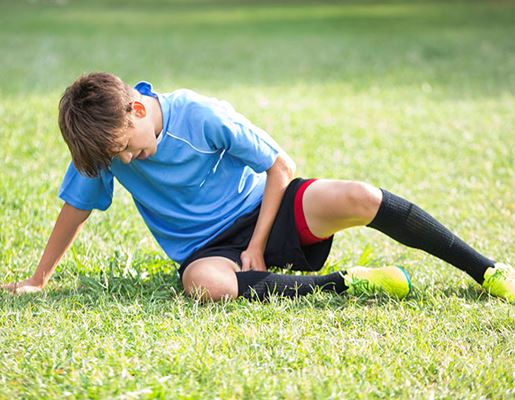
Knowing when to seek treatment
Rest, ice, compression and elevation (RICE) are the first steps to treating a knee injury. Gentle knee-strengthening exercises, appropriate footwear and support tape can all contribute to recovery and improve symptoms. If pain persists after a week, you should seek medical advice, particularly if your knee is swollen. You may be referred to an orthopaedic surgeon for further assessment, investigation and treatment.
Remember that running should not cause pain to your knees. As soon as you notice any changes to how your knees feel when you're running, seek medical advice as soon as you can.
Diagnosing your knee injury
There are several tests that can diagnose knee injuries. The information you give the doctor will help determine the next steps, as the location of pain is a key indicator of the underlying cause. The doctor will examine you for tenderness, swelling, range of motion, and stability. Further investigations may be required, such as:
X-ray – to check for fractures and arthritis.
CT scan – to assess for fractures and alignment.
MRI scan – to detect soft tissue damage such as meniscal tears, ligament injuries, loose bodies.
Knee aspiration – draining of fluid to test and diagnose inflammatory conditions.
Common surgical treatment options
If your knee does not respond to conventional treatment, there are many surgical options available for certain types of fractures and injuries that your doctor may recommend:
Knee arthroscopy
Knee arthroscopy is a minimally invasive surgery using a camera (arthroscope) to view and explore the inside of the knee joint. Using fine instruments, resection, repair and reconstruction of the internal structures of the knee can be performed when warranted.
Knee arthroscopy offers several advantages compared to traditional open surgery, including smaller incisions, less scarring, reduced pain, quicker recovery times and a lower risk of complications. However, not all knee conditions can be treated with arthroscopy, and the suitability of the procedure depends on the specific diagnosis and your individual circumstances. A healthcare professional, typically an orthopaedic surgeon, will evaluate your condition and determine the most appropriate treatment approach.

Meniscectomy or meniscus repair
In the case of a meniscus tear, a meniscectomy or meniscus repair are the most likely surgical options. These procedures include removing or repairing a portion of the torn meniscus during knee arthroscopy. Whenever possible, surgeons aim to preserve as much of the meniscus as feasible and resort to partial meniscectomies rather than total removal.
ACL reconstruction
During an ACL reconstruction, the torn anterior cruciate ligament is removed and replaced with a tendon graft, often harvested from another part of your knee such as your hamstrings or patella tendon. The graft serves as a scaffold for new tissue to grow and eventually become a functional replacement for the torn ACL. The procedure is typically performed using minimally invasive arthroscopic techniques, which involve making small incisions and using a camera (arthroscope) to guide the surgeon's instruments.
The decision to undergo ACL reconstruction depends on various factors, including the patient's age, activity level, overall health and the extent of the ACL injury. Not all ACL tears require surgical intervention, and some people may opt for non-surgical management if their lifestyle and needs allow. However, athletes, runners and people who engage in high-demand activities often choose ACL reconstruction to restore knee stability and reduce the risk of future knee injuries.

Knee replacement surgery
A knee replacement refers to a procedure where the knee joint is replaced with artificial implants that simulate the natural function of the joint. This surgery is typically performed to alleviate chronic knee pain and improve joint function in individuals whose knee joint has been severely compromised. This is rarely required in patients who are still capable of running.
There are many ways to diagnose and treat knee injuries from running. Formulating an effective treatment plan is key to relieving symptoms and restoring normal activity and function.
Contact us today to find out how we can help keep you running for longer.

